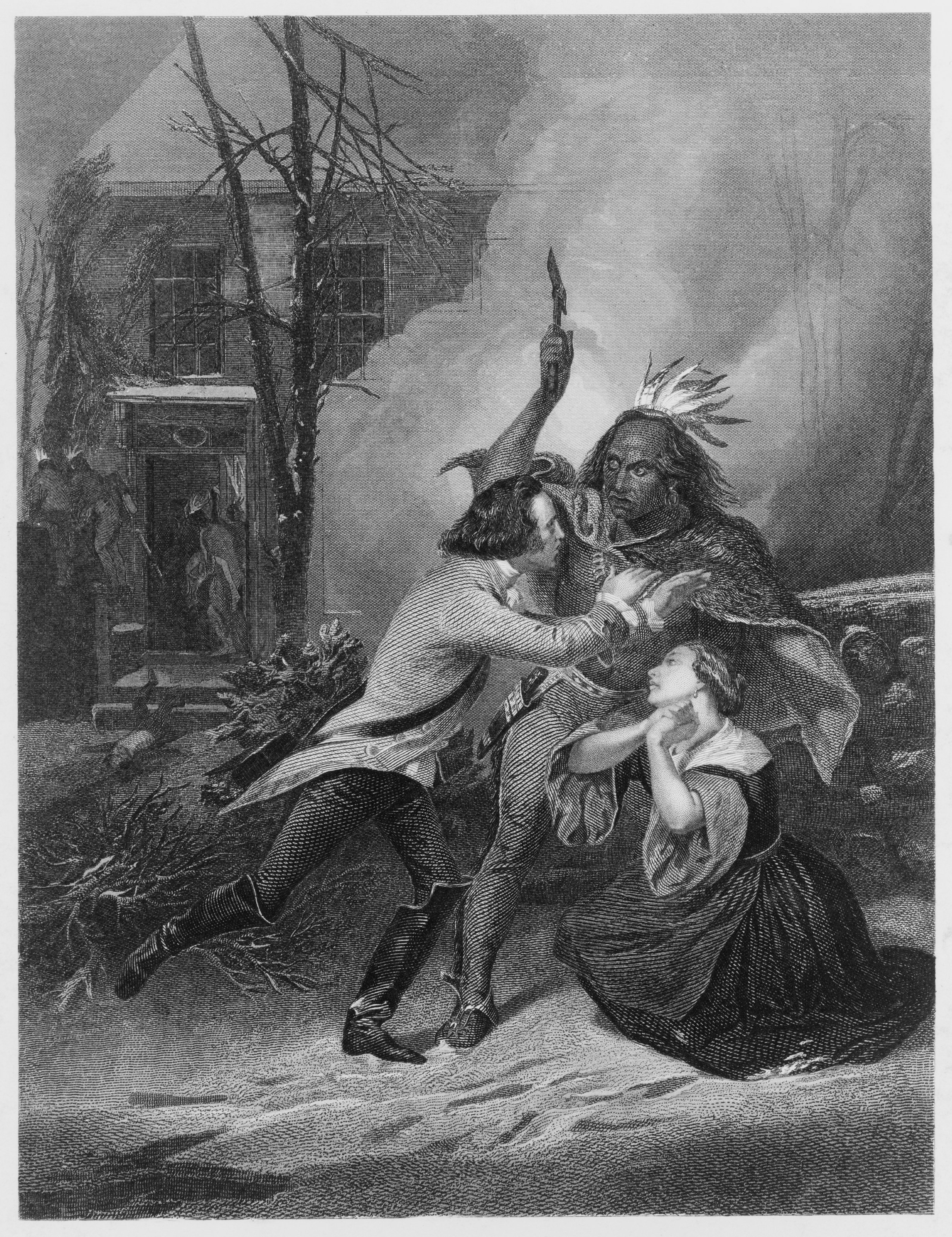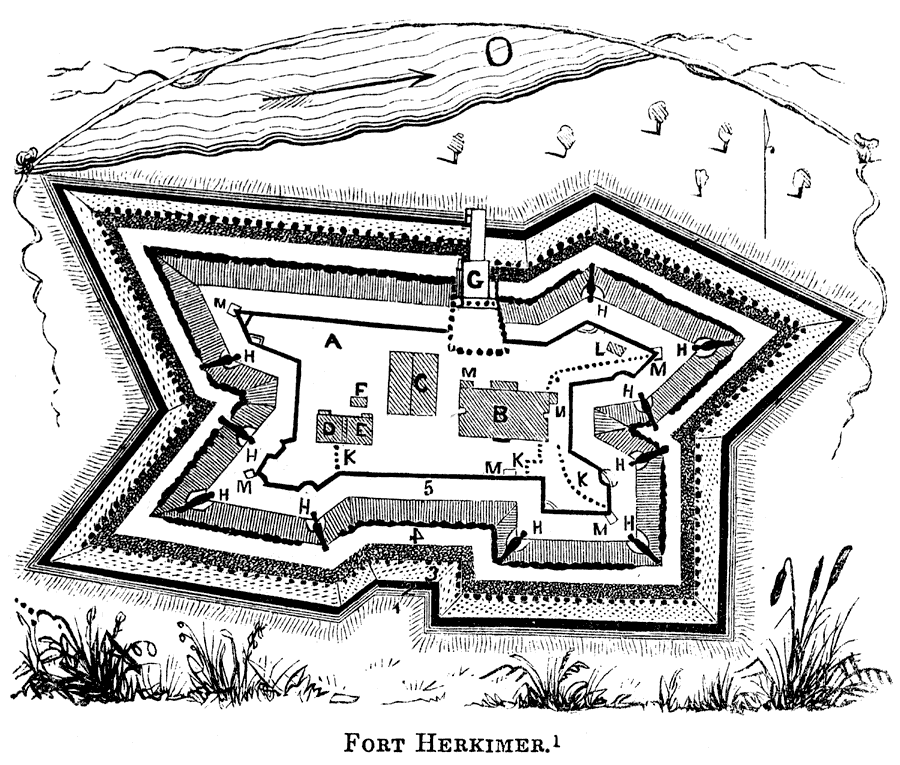|
Sullivan Expedition
The 1779 Sullivan Expedition (also known as the Sullivan-Clinton Expedition, the Sullivan Campaign, and the Sullivan-Clinton Campaign) was a United States military campaign during the American Revolutionary War, lasting from June to October 1779, against the four Kingdom of Great Britain, British-allied nations of the Iroquois (also known as the Haudenosaunee). The campaign was ordered by George Washington in response to Iroquois and Loyalist attacks on the Battle of Wyoming, Wyoming Valley, Attack on German Flatts (1778), German Flatts, and Cherry Valley massacre, Cherry Valley. The campaign had the aim of "the total destruction and devastation of their settlements." The Continental Army carried out a Scorched earth, scorched-earth campaign in the territory of the Iroquois Confederacy in what is now central New York (state), New York. The expedition was largely successful, with more than 40 Iroquois villages razed and their crops and food stores destroyed. The campaign drove 5,0 ... [...More Info...] [...Related Items...] OR: [Wikipedia] [Google] [Baidu] |
American Revolutionary War
The American Revolutionary War (April 19, 1775 – September 3, 1783), also known as the Revolutionary War or American War of Independence, was a major war of the American Revolution. Widely considered as the war that secured the independence of the United States, fighting began on April 19, 1775, followed by the Lee Resolution on July 2, 1776, and the Declaration of Independence on July 4, 1776. The American Patriots were supported by the Kingdom of France and, to a lesser extent, the Dutch Republic and the Spanish Empire, in a conflict taking place in North America, the Caribbean, and the Atlantic Ocean. Established by royal charter in the 17th and 18th centuries, the American colonies were largely autonomous in domestic affairs and commercially prosperous, trading with Britain and its Caribbean colonies, as well as other European powers via their Caribbean entrepôts. After British victory over the French in the Seven Years' War in 1763, tensions between the motherla ... [...More Info...] [...Related Items...] OR: [Wikipedia] [Google] [Baidu] |
Butler's Rangers
Butler's Rangers (1777–1784) was a Loyalist provincial military unit of the American Revolutionary War, raised by American loyalist John Butler. Most members of the regiment were Loyalists from upstate New York and northeastern Pennsylvania. Their winter quarters were constructed on the west bank of the Niagara River, in what is now Niagara-on-the-Lake, Ontario. The Rangers fought principally in New York and Pennsylvania, but ranged as far west as Ohio and Michigan, and as far south as Virginia and Kentucky. The Rangers were engaged in numerous violent raids that characterized the northern frontier of the American Revolutionary War, such as the Battle of Wyoming in July 1778 and the Cherry Valley massacre of November 1778. These actions earned the Rangers a reputation for ruthlessness. Formation Similar to other Loyalist regiments that fought for the British Crown during the American Revolution, for example the King's Royal Regiment of New York, Butler's Rangers was made up of ... [...More Info...] [...Related Items...] OR: [Wikipedia] [Google] [Baidu] |
Fred Anderson (historian)
Fred Anderson (born 1949) is an American historian of early North American history. Education and career Anderson received his B.A. from Colorado State University in 1971 and his Ph.D. from Harvard in 1981. He has taught at Harvard and at the University of Colorado, Boulder, where he is currently Professor Emeritus of History. He has held fellowships from the National Endowment for the Humanities, the Charles Warren Center of Harvard University, the Guggenheim Foundation and the Rockefeller Foundation. He is the author or editor of five books including ''Crucible of War: The Seven Years' War and the Fate of Empire in British North America, 1754-1766'' (New York: Alfred A. Knopf, February 11, 2000; London: Faber and Faber, 2000), which won the Mark Lynton History Prize and the 2001 Francis Parkman Prize as best book in American history. Together with Andrew Cayton (Miami University), he has recently published ''The Dominion of War: Empire and Liberty in North America, 150 ... [...More Info...] [...Related Items...] OR: [Wikipedia] [Google] [Baidu] |
State University Of New York At Oneonta
The State University of New York College at Oneonta, also known as SUNY Oneonta, is a public college in Oneonta, New York. It is part of the State University of New York (SUNY) system. History SUNY Oneonta was established in 1889 as the Oneonta Normal School, as part of founding normal schools across the state to train teachers and expand public education. It was located in a building nicknamed "Old Main" at the top of Maple Street in the city of Oneonta. The school's first principal was James M. Milne, for whom the college's current library is named. For nearly 40 years, Old Main was the only building on campus, until 1933 when Bugbee School was built. Named after Percy I. Bugbee, the second principal of the Oneonta Normal School, Bugbee School provided an on-campus training facility for the student teachers attending the normal school. In 1948, the college became a founding member of the State University of New York system, and the Oneonta Normal School was officially rename ... [...More Info...] [...Related Items...] OR: [Wikipedia] [Google] [Baidu] |
Genocide Of Indigenous Peoples
The genocide of indigenous peoples, colonial genocide, or settler genocide is elimination of entire communities of indigenous peoples as part of colonialism. Genocide of the native population is especially likely in cases of settler colonialism, with some scholars arguing that settler colonialism is inherently genocidal. While the concept of genocide was formulated by Raphael Lemkin in the mid-20th century, the expansion of various European colonial powers such as the British and Spanish empires and the subsequent establishment of colonies on indigenous territories frequently involved acts of genocidal violence against indigenous groups in the Americas, Australia, Africa, and Asia. According to Lemkin, colonization was in itself "intrinsically genocidal". He saw this genocide as a two-stage process, the first being the destruction of the indigenous population's way of life. In the second stage, the newcomers impose their way of life on the indigenous group. According to D ... [...More Info...] [...Related Items...] OR: [Wikipedia] [Google] [Baidu] |
Fort Niagara
Fort Niagara is a fortification originally built by New France to protect its interests in North America, specifically control of access between the Niagara River and Lake Ontario, the easternmost of the Great Lakes. The fort is on the river's eastern bank at its mouth on Lake Ontario. Youngstown, New York, later developed near here. The British took over the fort in 1759 during the French and Indian War. Although the United States was ostensibly ceded the fort after it gained independence in the American Revolutionary War, the British stayed until 1796. Transfer to the U.S. came after signing of the Jay Treaty that reaffirmed and implemented the legal border with British Canada. Although the US Army deactivated the fort in 1963, the Coast Guard continues to have a presence here. A non-profit group operates the fort and grounds as a state park and preserves it in part as a museum and site for historical re-enactments. It is also a venue for special events related to the region' ... [...More Info...] [...Related Items...] OR: [Wikipedia] [Google] [Baidu] |
Scorched Earth
A scorched-earth policy is a military strategy that aims to destroy anything that might be useful to the enemy. Any assets that could be used by the enemy may be targeted, which usually includes obvious weapons, transport vehicles, communication sites, and industrial resources. However, anything useful to the advancing enemy may be targeted, including food stores and agricultural areas, water sources, and even the local people themselves, though the last has been banned under the 1977 Geneva Conventions. The practice can be carried out by the military in enemy territory or in its own home territory while it is being invaded. It may overlap with, but is not the same as, punitive destruction of the enemy's resources, which is usually done as part of political strategy, rather than operational strategy. Notable historic examples of scorched-earth tactics include William Tecumseh Sherman's March to the Sea in the American Civil War, Kit Carson's subjugation of the A ... [...More Info...] [...Related Items...] OR: [Wikipedia] [Google] [Baidu] |
Continental Army
The Continental Army was the army of the United Colonies (the Thirteen Colonies) in the Revolutionary-era United States. It was formed by the Second Continental Congress after the outbreak of the American Revolutionary War, and was established by a resolution of Congress on June 14, 1775. The Continental Army was created to coordinate military efforts of the Colonies in their war for independence against the British, who sought to keep their American lands under control. General George Washington was the commander-in-chief of the army throughout the war. The Continental Army was supplemented by local militias and volunteer troops that were either loyal to individual states or otherwise independent. Most of the Continental Army was disbanded in 1783 after the Treaty of Paris formally ended the fighting. The 1st and 2nd Regiments of the Army went on to form what was to become the Legion of the United States in 1792. This became the foundation of what is now the United St ... [...More Info...] [...Related Items...] OR: [Wikipedia] [Google] [Baidu] |
Cherry Valley Massacre
The Cherry Valley massacre was an attack by British and Iroquois forces on a fort and the town of Cherry Valley in central New York on November 11, 1778, during the American Revolutionary War. It has been described as one of the most horrific frontier massacres of the war.Murray, p. 64 A mixed force of Loyalists, British soldiers, Seneca and Mohawks descended on Cherry Valley, whose defenders, despite warnings, were unprepared for the attack. During the raid, the Seneca in particular targeted non-combatants, and reports state that 30 such individuals were killed, in addition to a number of armed defenders. The raiders were under the overall command of Walter Butler, who exercised little authority over the Indian warriors on the expedition. Historian Barbara Graymont describes Butler's command of the expedition as "criminally incompetent". The Seneca were angered by accusations that they had committed atrocities at the Battle of Wyoming, and the colonists' recent destruc ... [...More Info...] [...Related Items...] OR: [Wikipedia] [Google] [Baidu] |
Attack On German Flatts (1778)
The Attack on German Flatts (September 17, 1778) was a raid on the frontier settlement of German Flatts, New York (which then also encompassed what is now Herkimer) during the American Revolutionary War. The attack was made by a mixed force of Loyalists and Iroquois under the overall command of Mohawk leader Joseph Brant, and resulted in the destruction of houses, barns, and crops, and the taking of livestock for the raiders' use. The settlers, warned by the heroic run of Adam Helmer, took refuge in local forts but were too militarily weak to stop the raiders. Brant's attack was one of a series executed under his command or that of Loyalist and Seneca leaders against communities on what was then the frontier of western New York and northern Pennsylvania. New York authorities responded by ordering an expedition that destroyed Brant's forward operating bases in Iroquois territory. Background With the failure of British General John Burgoyne's campaign to the Hudson after th ... [...More Info...] [...Related Items...] OR: [Wikipedia] [Google] [Baidu] |
Battle Of Wyoming
The Battle of Wyoming, also known as the Wyoming Massacre, was a military engagement during the American Revolutionary War between Patriot (American Revolution), Patriot militiamen and a mixed force of Loyalist (American Revolution) , Loyalist soldiers and Iroquois raiders. The clash took place in the Wyoming Valley of Pennsylvania on July 3, 1778, in Exeter, Pennsylvania , Exeter and Wyoming, Pennsylvania. More than 300 Patriots were killed in the battle. After the battle, Patriot settlers claimed that the Iroquois raiders had hunted and killed fleeing Patriots, and had then ritually tortured 30 to 40 who had surrendered until they died. In the massacre that followed, which was committed entirely by the Iroquois raiders, 360 American men, women, and children died, and many who escaped to the forests subsequently expired of starvation or exposure. Background In 1777, British general John Burgoyne led the Saratoga campaign to gain control of the Hudson River during the America ... [...More Info...] [...Related Items...] OR: [Wikipedia] [Google] [Baidu] |
George Washington
George Washington (February 22, 1732, 1799) was an American military officer, statesman, and Founding Fathers of the United States, Founding Father who served as the first president of the United States from 1789 to 1797. Appointed by the Continental Congress as commander of the Continental Army, Washington led the Patriot (American Revolution), Patriot forces to victory in the American Revolutionary War and served as the president of the Constitutional Convention (United States), Constitutional Convention of 1787, which created the Constitution of the United States and the American federal government. Washington has been called the "Father of the Nation, Father of his Country" for his manifold leadership in the formative days of the country. Washington's first public office was serving as the official Surveying, surveyor of Culpeper County, Virginia, from 1749 to 1750. Subsequently, he received his first military training (as well as a command with the Virginia Regiment) d ... [...More Info...] [...Related Items...] OR: [Wikipedia] [Google] [Baidu] |




.jpg)




